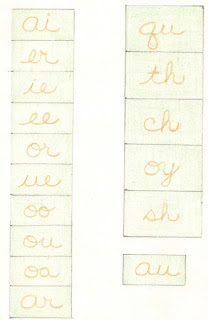Elementary Montessori utilizes many charts to express key concepts for the children to explore.
Geography has the largest collection of charts, with 3 subsets: normally numbered, a set for typically upper elementary numbered with an "a" following as well as a set of work charts.
One of the work charts is called the Protractor Chart.
 |
The chart comes in two parts. The background piece and the protractor.
There are two protractor pieces so there is a back-up when the first wears out. |
 |
| Cut out one piece, hole punch and use a brad. |
 |
| Assembled |
Naming the parts:
- Yellow arrow = sun rays
- Protractor piece = earth
- Colored background = climate of the time
- Degrees = lines of latitudes
- dashed lines = tropics and lines of latitude on either side of the equator
- red line = equator
Working with the chart:
- Review previous work/knowledge (dates of the equinoxes and solstices in relation to the sun's rays).
- Identify the parts.
- Suggest that as we move the earth so that the sun's rays fall perpendicular to each line of latitude, the seasons change.
- Select particular locations according to their latitude and explore the seasons accordingly.
- Select locations from the opposite hemisphere and see where the city falls as the protractor is tipped accordingly.
This is one lesson (not provided in full detail here) that shows a key experience laying a foundation for further study. It invites explorations and potential questions. If this is as far as the child goes with the information, it is enough to have the basic information without wasting their time and energies for many days covering the same information; it fits within a grander set of other key experiences that includes much more already. Every child has their area of in-depth study, whether this one or another.
 Related Montessori Nuggets:
Related Montessori Nuggets: Related Montessori Nuggets:
Related Montessori Nuggets:

